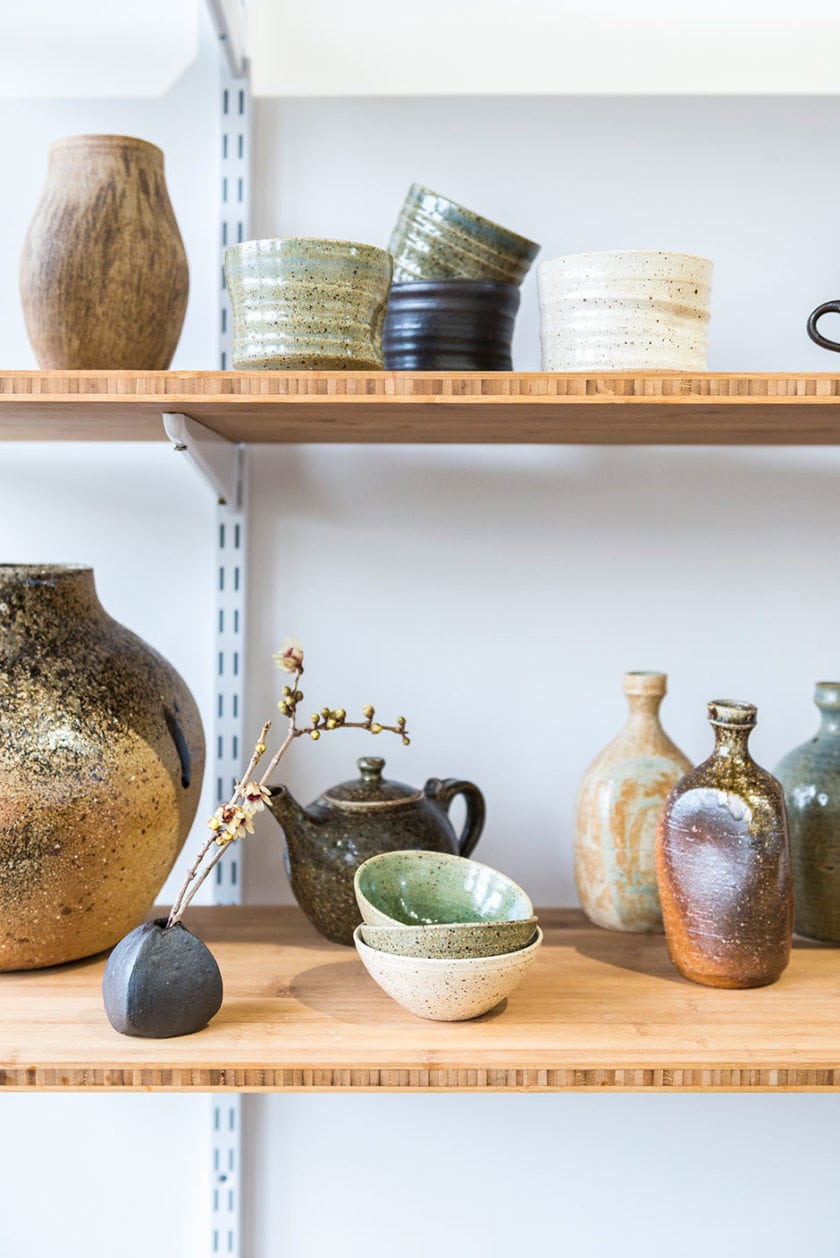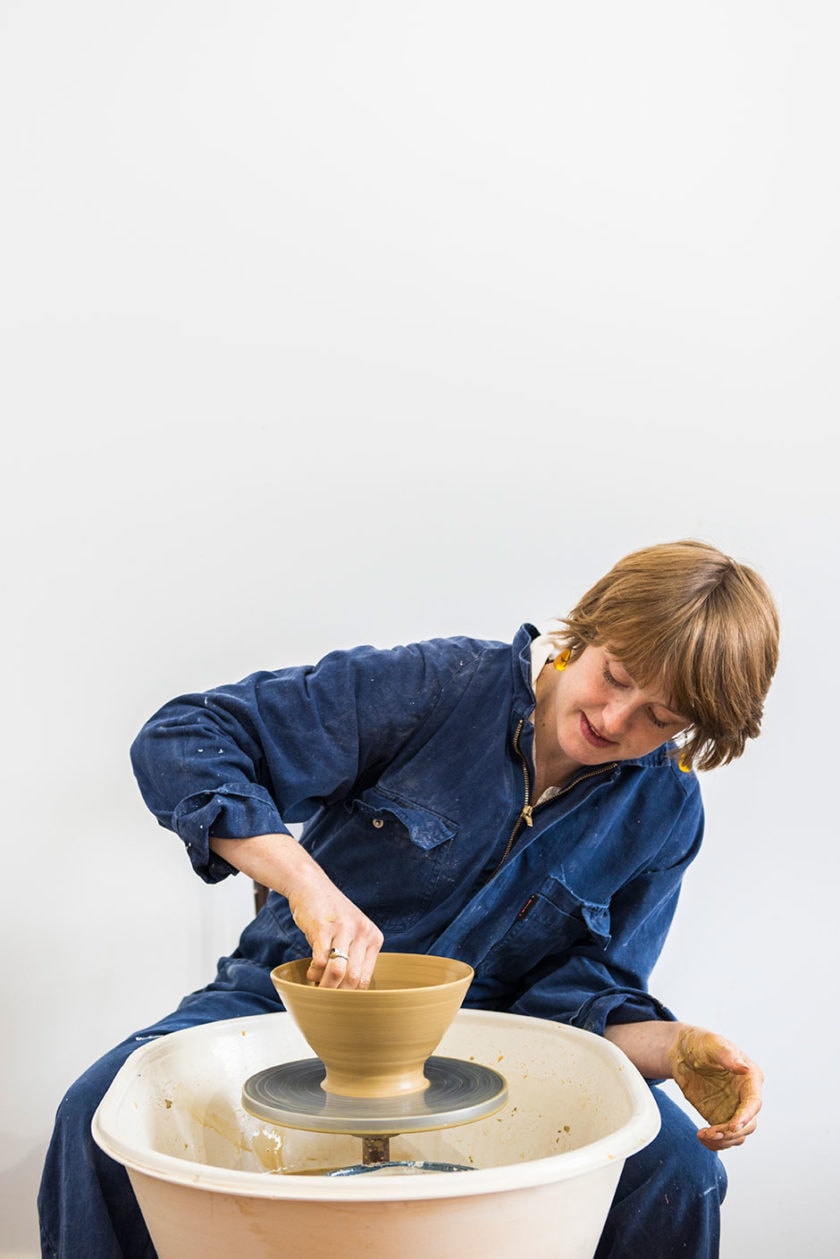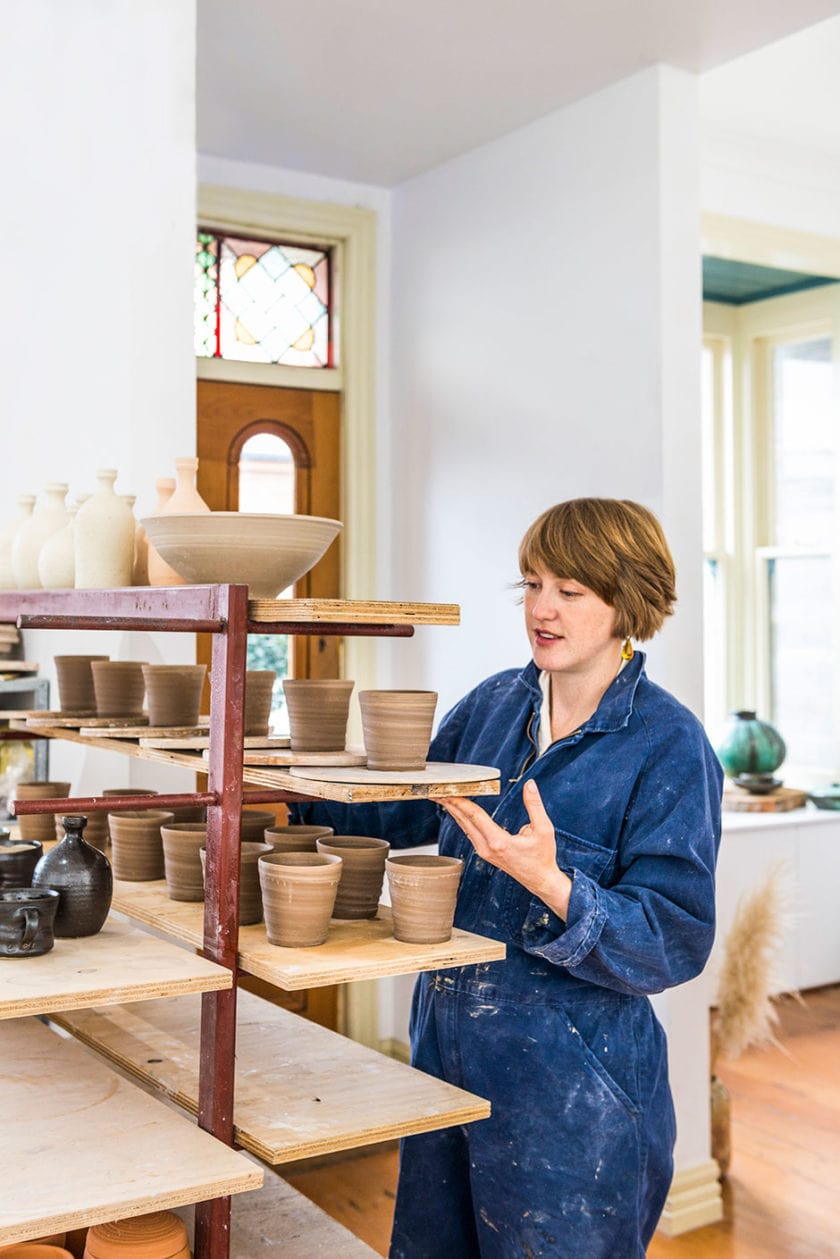The day potter Grace Uivel discovered clay, she knew she’d found her calling.
Lyttelton’s Grace Uivel has recently opened the door to her new space Ata Ceramics, fulfilling her desire to curate a shop dedicated to pottery expertly crafted in Canterbury, and “make a proper life” out of being a potter.
Congratulations on your new venture, Grace — how are you finding it? It’s nice to have a little more creative control on the retail side of things. I love seeing my work in other retailers’ spaces, as they give it another context and a different life with different people buying it, but here I can make, sell and display things exactly how I want.
I think Ata has also been really positive for the other potters whose work I stock, in that a few of them were incredibly skilled and working away but not able to get around to retailing. I always thought it was a waste that such amazing work was being made right here in Christchurch but wasn’t easy to find. Now I get to see it being celebrated and taken home to be used, which is the whole point.

Why does Lyttelton feel like such a good fit for your business? I’ve always thought Lyttelton was one of the coolest little towns. I visited when I was a child and said forever afterwards that it was my favourite place in all of New Zealand. I grew up in Wellington, so some parts of Lyttelton feel like home: the hills, harbour and good coffee. The community here has been incredibly encouraging and enthusiastic as well.


How long have you been making ceramics? I’ve been potting for seven years now. It’s a difficult craft, so a lot of that time was spent learning and it’s only in the last three years that I’ve been doing it as my main job. I mainly work on the potter’s wheel as I can’t get enough of that feeling of clay in movement; when I first discovered it I walked out of that studio knowing I’d found the love of my life. I was very lucky in that way — I knew I wanted to be a potter even before I’d properly started learning.
What methods do you use? I was taught by master potter Frederika Ernsten; walking into her tuition was my second great fortune. She’s deeply passionate about the craft and has extensive knowledge that only potting since the ’70s can provide, so a lot of my work is made with a solid foundation in traditional methods and forms. She teaches good craftsmanship, not just object making, and I try to do the same, which I think is a rare thing.
No shortcuts, no ‘That’ll do’ or ‘I think I can get away with that’ — it had to be done right or not at all. I’m glad to have that backbone as I’m quite a loose, intuitive sort of person. Her teaching has given me structure.

How do you get into a creative mindset? Just turning up to the studio is a big part of it. I start gently, have a coffee, look at things I’ve been making. The coffee cup I choose to drink out of reflects my mindset — I choose the one I need that day, whether I want to be challenged or soothed. Clay needs you to be in a calm state when you’re working with it, so if I’m frustrated or upset, going for a walk on the beach with the dog and picking up anything that interests me, or foraging for some greenery for the shop can put things right.

You draw inspiration from nature — have you always had an affinity with the outdoors? I’ve always had a connection with the natural world. I come from gardeners, farmers and seafaring folk like a lot of us in Aotearoa do, but for me that’s enduring.
I grew up very close to the sea, so I’ve always needed a coastline to keep me balanced and inspired. My tāne and I go tramping and get out to wilder places whenever we can, and I always come back weighed down with bags of clay and sand to use, and endless collections of rocks. The coast in particular is special for me, that meeting of ocean and rock. I get a lot of energy from it — seeing what it brings in and how it changes.
What do you like making the most? It changes as I go through phases, but I really try to give each of my pieces a sense of their own mauri [life force] and personality, and bottles lend themselves really well to that as they can be so expressive, sort of like bodies. I also love to make big, wide bowls. The feeling of throwing a really big bowl on the wheel is pretty unbeatable, and I like how big bowls become part of a house, part of shared food and celebration. It’s special to make these objects that become more meaningful through use.
I really want the things that I make to suit their use. It’s a balance between function and beauty, but if my intention is to make something for use, it’s got to be pretty good at what it does or it’ll be abandoned in the back of the cupboard.

What’s your favourite part of the process? I think every potter would have to agree that pulling things out of the kiln and getting to know them is what sustains you in what can be a punishing process. Things often go wrong, so seeing these objects come out and surprise you with how they’ve turned out is kind of like Christmas. I also enjoy it when an object is taking shape on the wheel and the smallest touch can change its character completely. It’s so responsive, so you just keep altering and looking, altering and looking, until it decides that it’s done, and you have to know when that is. That never gets old.
Days in the studio can be physically and mentally taxing — what do you do to unwind? It is physical but I don’t think I really realised how physical until I was pregnant and things started to get a bit more tiring. After work at the moment, with growing a baby, I mostly just have a bath, cook and eat something delicious, have a chat and a laugh and go to bed. But usually I’d bike places, read books, meet up with people, do some gardening, go for a swim or enjoy some sunshine with the dog.
Potting is physical but it’s a slow job as well, so I take it easy during the day if I need to by taking a break and sitting outside or listening to some music. It sounds pretty dreamy when I describe it like that, but there are emails and endless cleaning tasks as well. Half of being a potter is cleaning clay off things — they don’t tell you that!
ataceramics.wordpress.com
@grace.uivel.ceramics
Interview Alice Lines
Photography Kate Claridge

